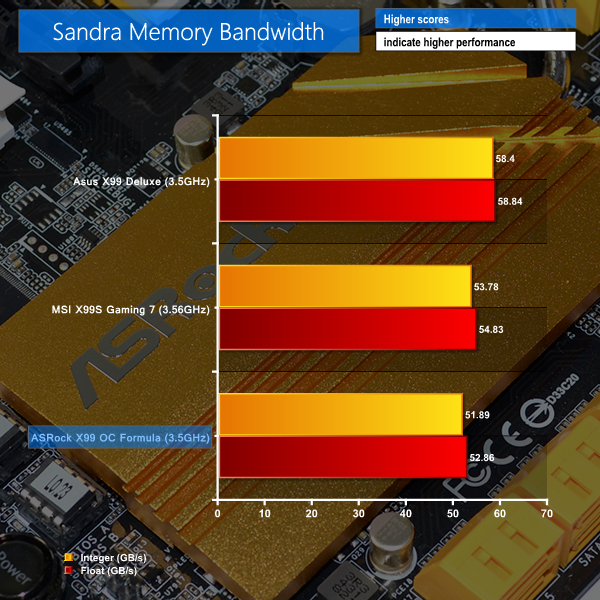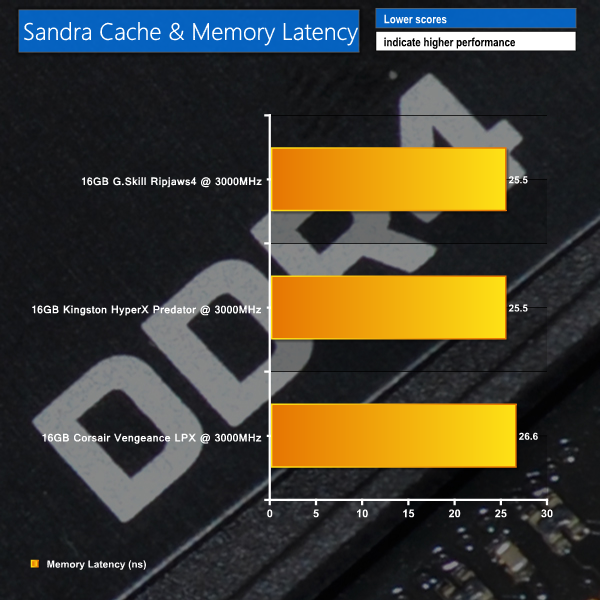Sandra Memory Bandwidth
Sandra Cache & Memory Latency
Sandra's synthetic system analysis workloads will typically show preference to the hardware with the best on-paper specifications (as one would assume). Therefore, it is no surprise that the tighter timings of G.Skill's Ripjaws 4 kit take it to top spot in the memory bandwidth test and joint-first in the latency benchmark.
Kingston's very similar HyperX Predator kit is very close to the G.Skill set in terms of memory bandwidth, while the looser timings of Corsair's Vengeance LPX modules hurt their latency score.
As a valid comparison, a dual-channel 16GB 2400MHz CL10 DDR3 memory kit, coupled with a Z97 motherboard and 4790K CPU, will provide just under 30GBps of memory bandwidth. Latency numbers are typically around the 20ns-level for such a kit. Sixteen Gigabytes of 2133MHz CL9 quad-channel DDR3 (with a 4960X CPU) registers a memory bandwidth level of around 44-47GBps.
As far as raw bandwidth goes, DDR4 memory clearly has the edge over DDR3. When it comes to latency, the high clock speeds of DDR4 kits can help to narrow the deficit created by DDR3 memory's tighter timings.
 KitGuru KitGuru.net – Tech News | Hardware News | Hardware Reviews | IOS | Mobile | Gaming | Graphics Cards
KitGuru KitGuru.net – Tech News | Hardware News | Hardware Reviews | IOS | Mobile | Gaming | Graphics Cards





I AM IN IT TO WIN IT GREAT MEMORY
Thanks KitGuru – been struggling to work out how to get my Corsair 4 x 4GB 2800MHz to play ball in my Rampage V – just the article I needed to get my head around the XMP settings 🙂
Is there any real difference between DDR3 and DDR4 that would justify to get DDR4 for a new rig right now despite the difference in price ?
You don’t have a choice if you plan on building an X99 system. It only uses DDR4 memory modules and you can’t use DDR4 on Z97 and older mainstream motherboards. But if you mean Z97 with DDR3 vs X99 with DDR4, then their is real and significant performance difference.
yes, I meant Z97+DDR3 vs Z99+DDR4, especially for games.